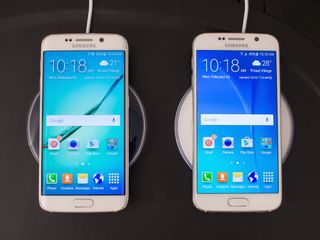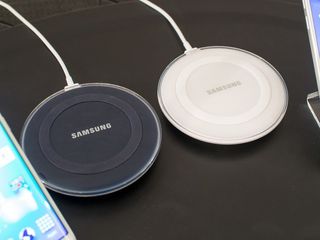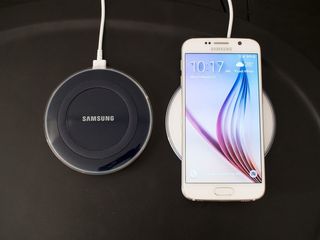Dual wireless charging on the Samsung Galaxy S6, and why it matters

I love wireless charging, and have been using it in one form or other since the Nexus One when we had to use this hideous backplate replacement to get the job done. While the nerdy parts of me couldn't wait for wireless charging to catch on, the rest of my brain knew it wasn't going to happen anytime soon.
Even now, years later with dozens of devices supporting the technology, wireless charging is still very much a fringe thing that hasn't gained even close to the momentum it deserves. When a post in the forums popped up asking why Samsung's dual wireless charging implementation on the Galaxy S6 and Galaxy S6 edge was a big deal, and whether or not there was anything to be concerned about, it seemed like a more thorough explanation of what is happening on these new phones was necessary.

For the most part, when Android users think wireless charging they think Qi. Google has been adding Qi charging in their Nexus devices for a while now, and Qi is the standard used in most Android devices that support wireless charging. As a result, most Android users who have enjoyed Qi charging over the last couple of years would be perfectly happy if Qi charging became the global standard and everything else just went away. That's not quite how things are going. There's a different wireless charging platform called PMA, which is supported by a separate group of companies and includes features that are significantly more useful to companies who would offer wireless charging in their facilities than Qi charging. In effect, we have two artificially incompatible formats attempting the same thing that are appealing to two totally different groups.
Samsung including support for both Qi and PMA in the Galaxy S6 and Galaxy S6 edge is a big deal for several reasons. First, the support is baked into the device and not through some awkward accessory that you pay for after you have the phone (though it is worth pointing out that no wireless charging device is included in the box). Second, there are no accessories necessary for charging wherever you are. Starbucks, McDonalds, those little charging stations at the airport, and the accessory you purchased for your personal use at home will all just work. Once you place your phone on the charging platform, the hardware will detect which charging tech you are using, and the phone will just start charging. No settings, no adjustments, nothing.
There's some concern about the way PMA includes the ability to track users in their platform, which is a selling point being used to get companies like Starbucks to deploy the technology. PMA creates a unique ID and associates it with your device, making it so Starbucks can track how many times you come into a location and how long you charge your device while you are there. This doesn't include any personal information, but it does make it so Starbucks can tell how this tech is being used in their stores. During a recent interview, Powermat CEO Thorsten Heins noted that the tech could eventually be used to track your behavior and serve you coupons or ads based on that behavior, but currently that isn't being done through any of PMA's partners. Users would also have to opt-in to this, which would have to happen through an app made by the company offering you power, essentially adding your unique ID to an account you create with that company. There'd be no way to grab personal information or be served ads and coupons unless you give permission.

At the end of the day, this is a very good thing for fans of wireless charging and a big move for Samsung to be the first Android smartphone that supports both formats out of the box. We're not going to have just one standard for wireless charging anytime soon, and it's more than likely we'll be seeing more devices this year with the ability to charge on both platforms out of the box. It's a great way to get more people to give this tech a shot, and more wireless charging users out in the world is never a bad thing.
Take a look at our hands on with the Galaxy S6 and Galaxy S6 edge to learn more!
Be an expert in 5 minutes
Get the latest news from Android Central, your trusted companion in the world of Android

